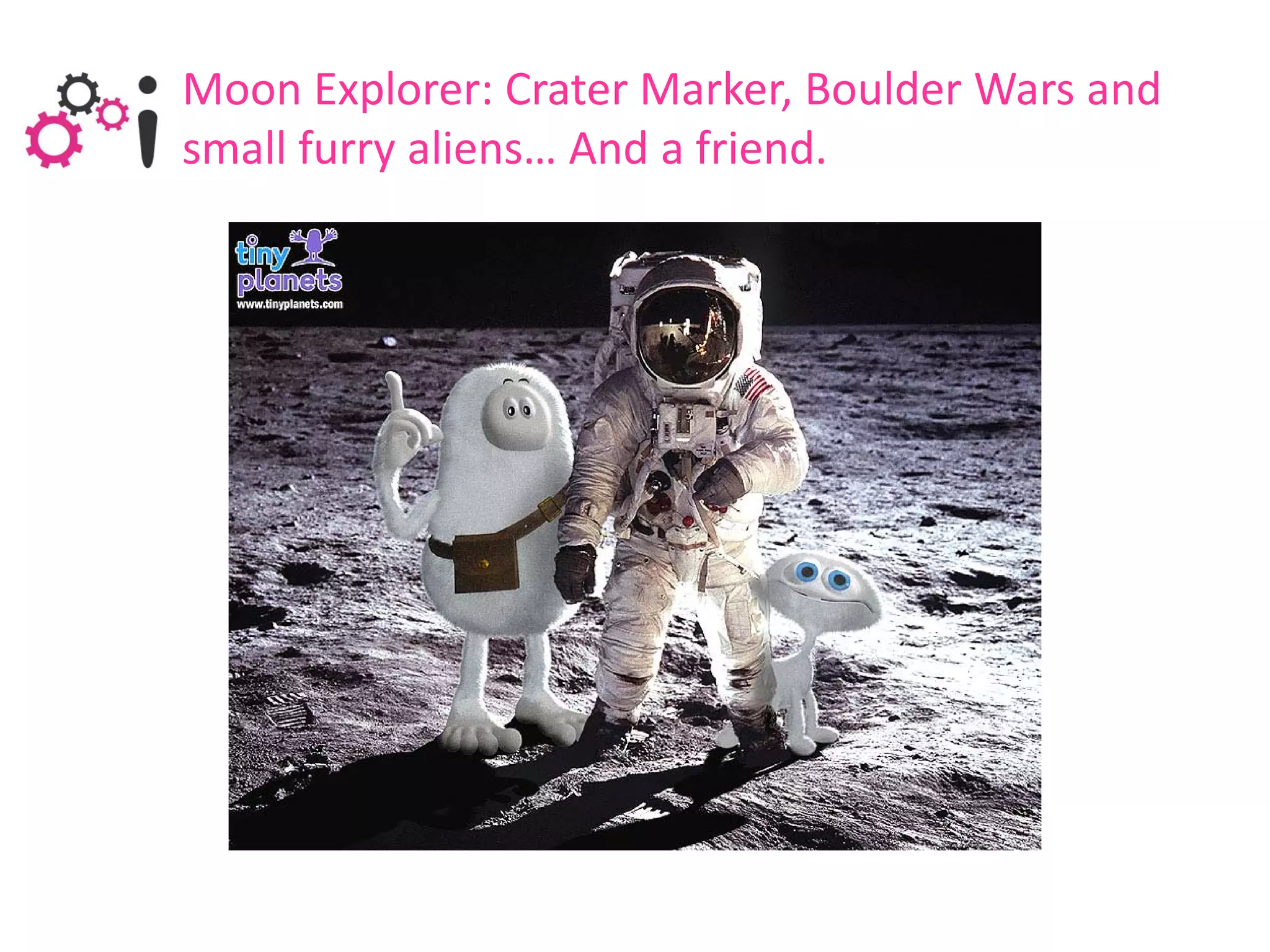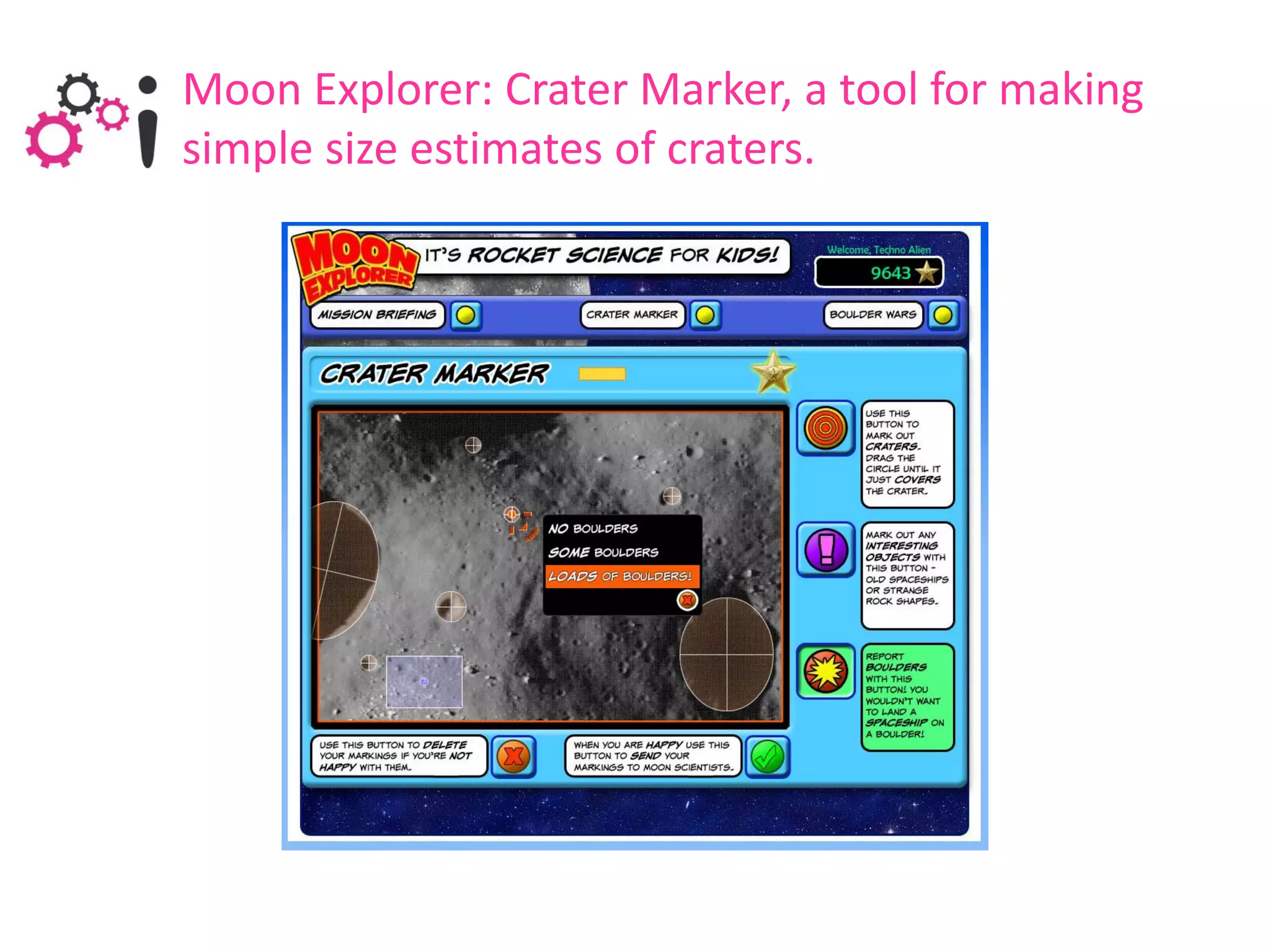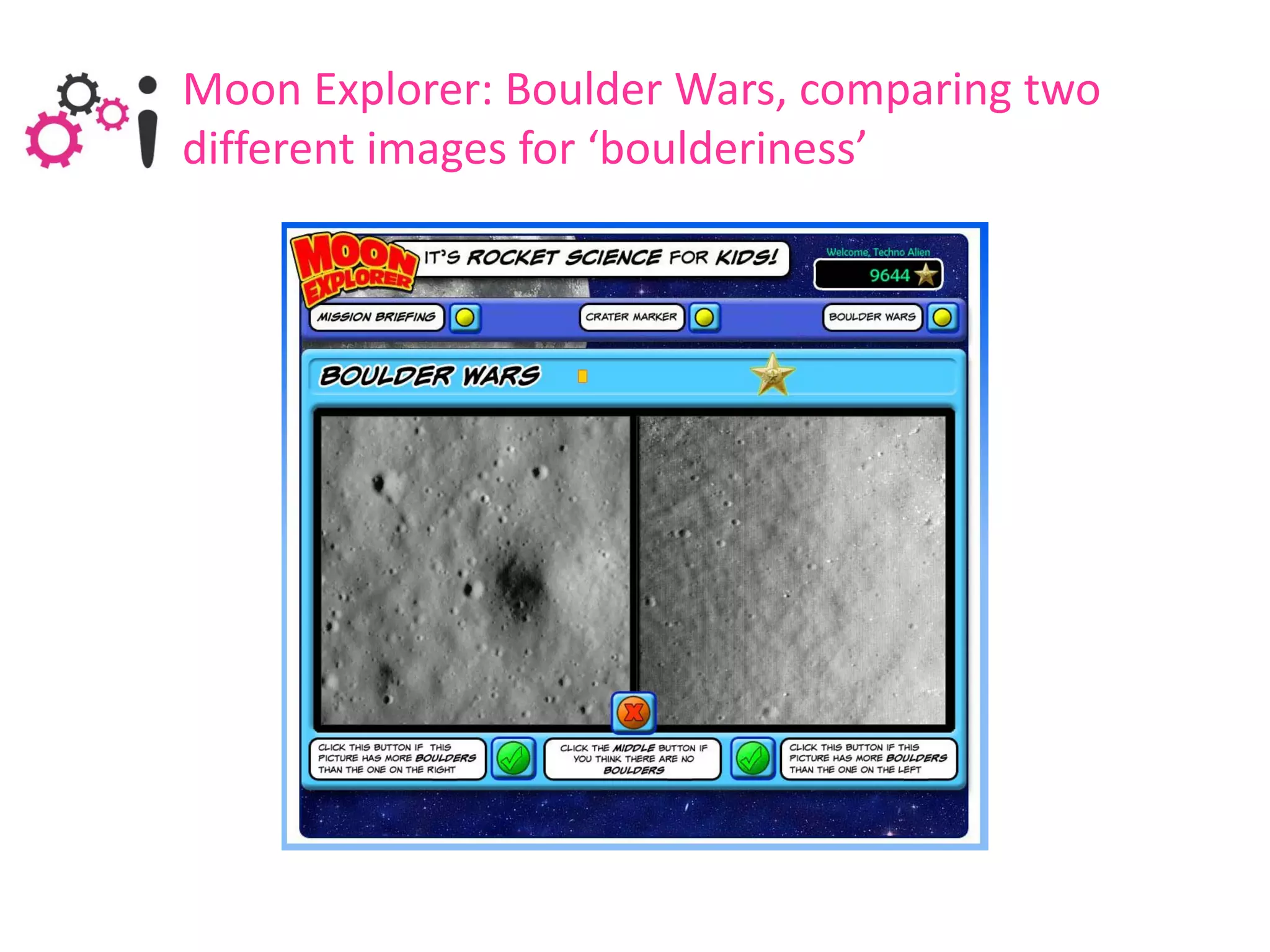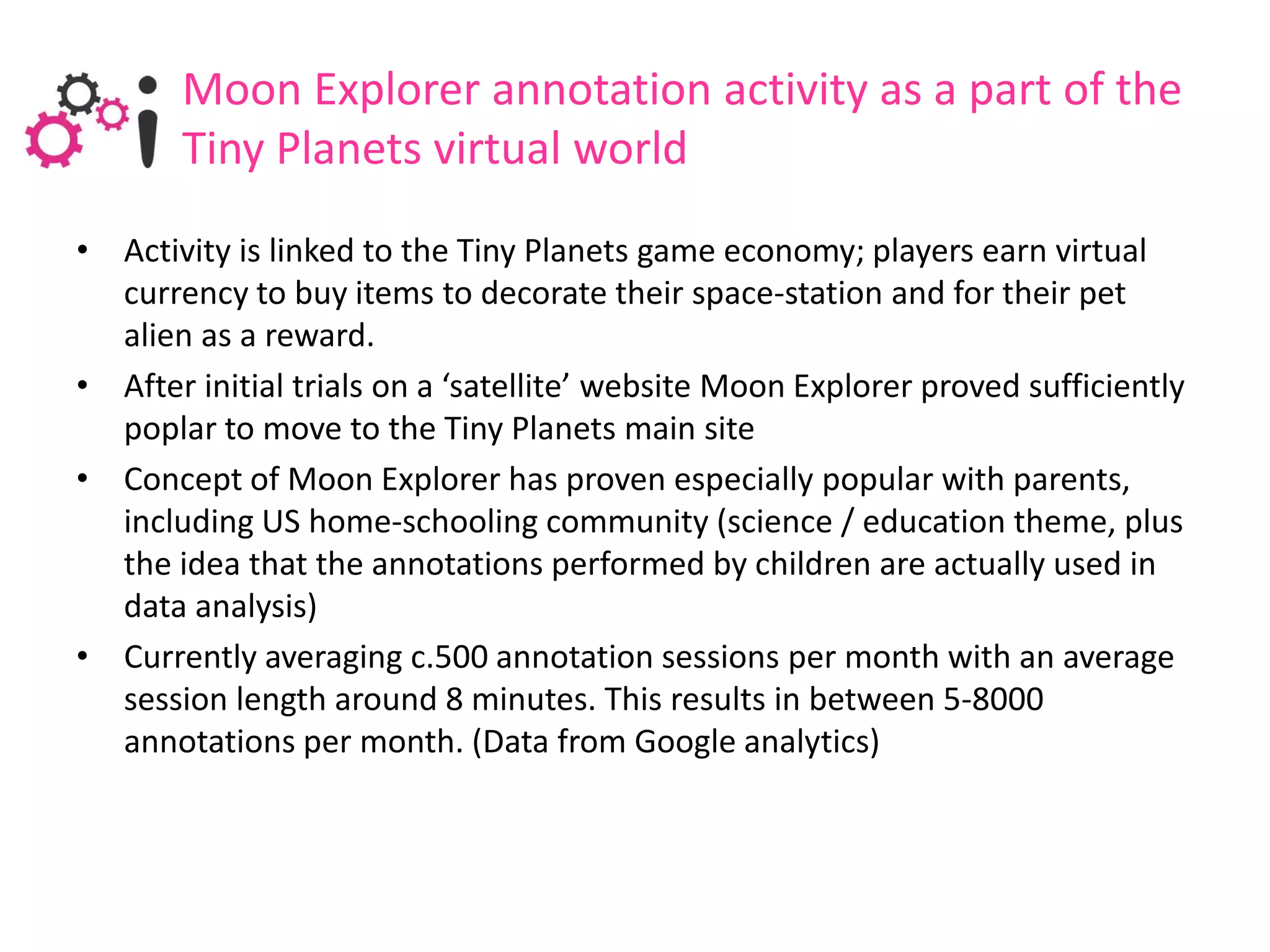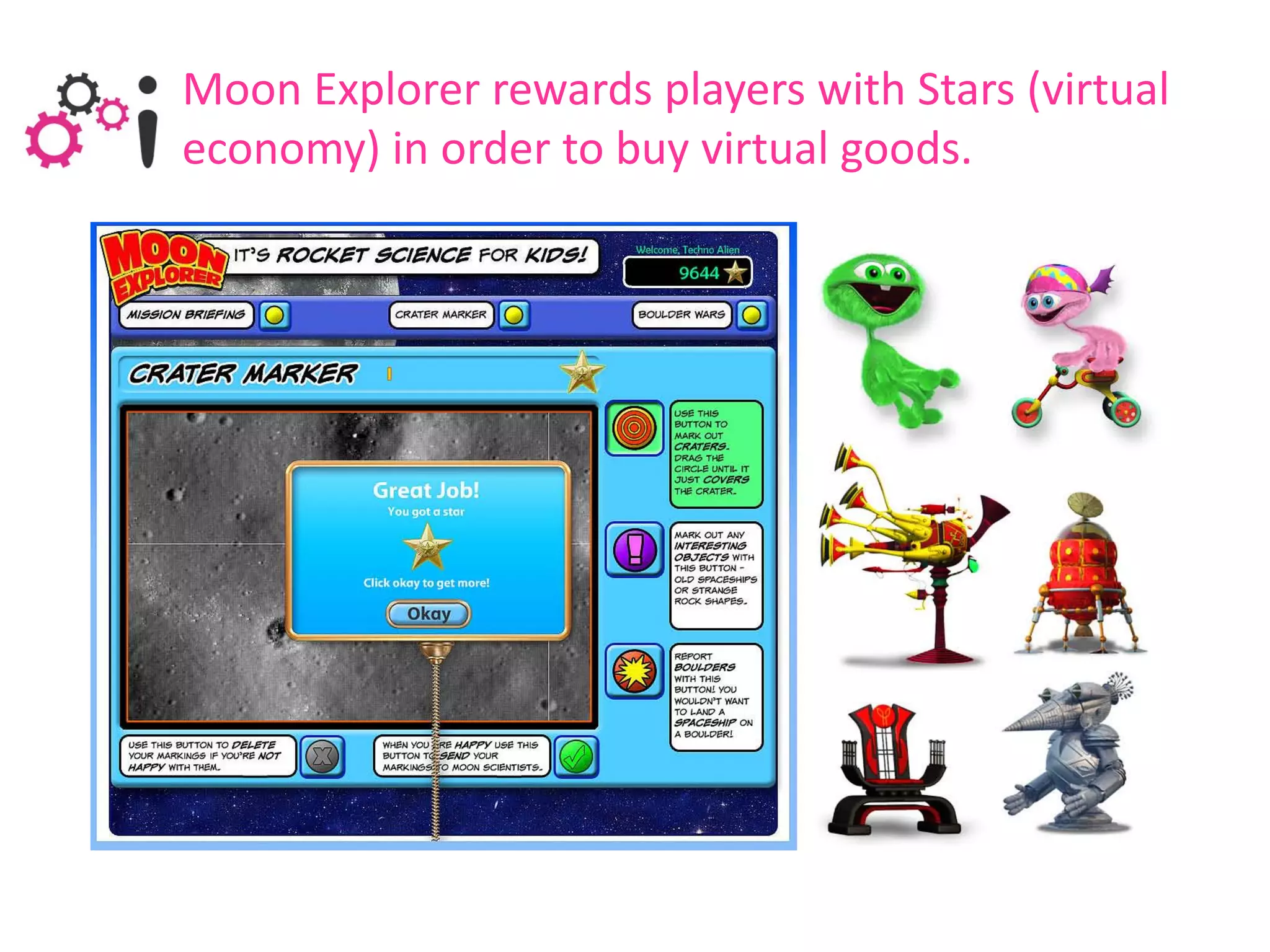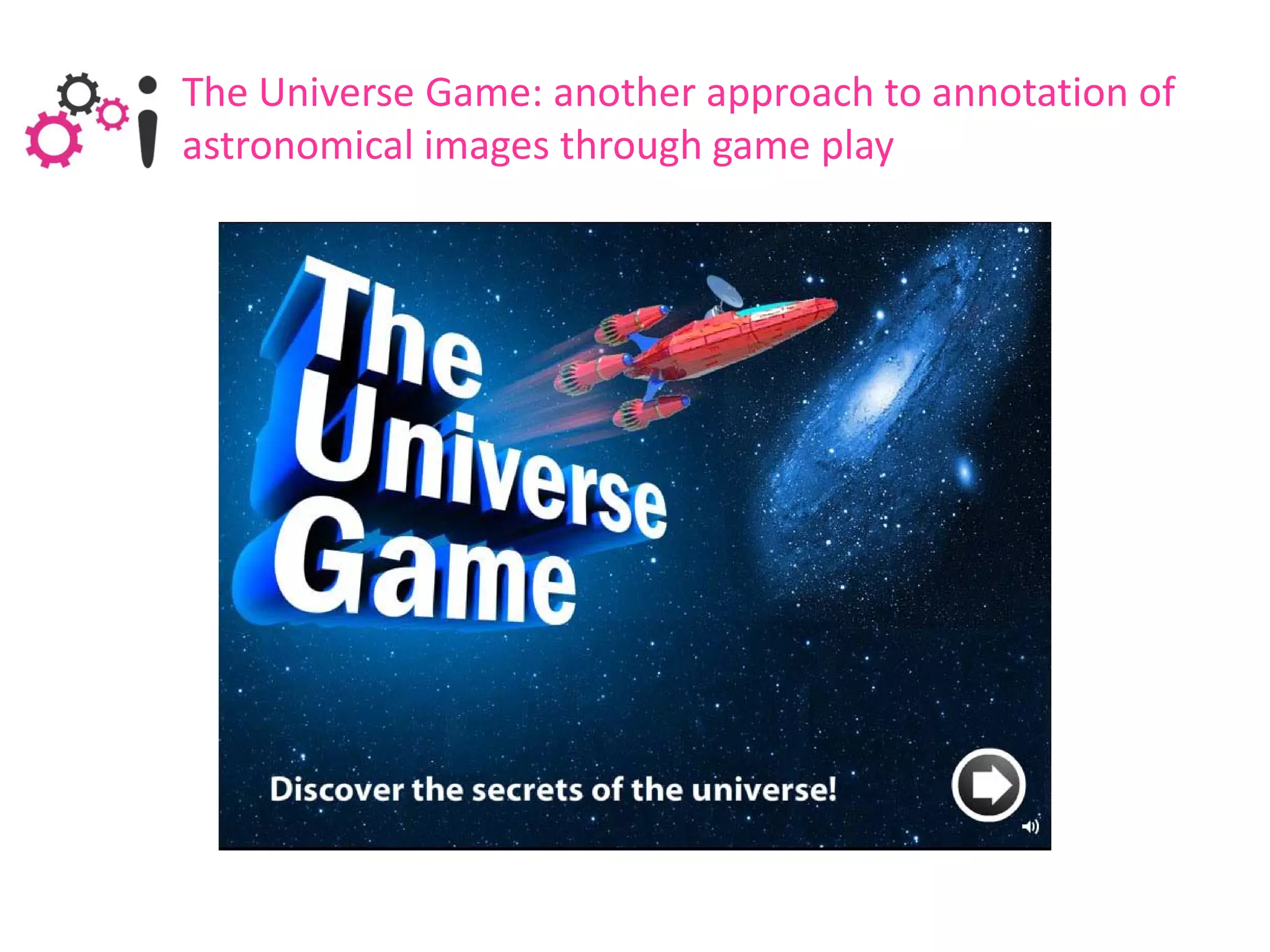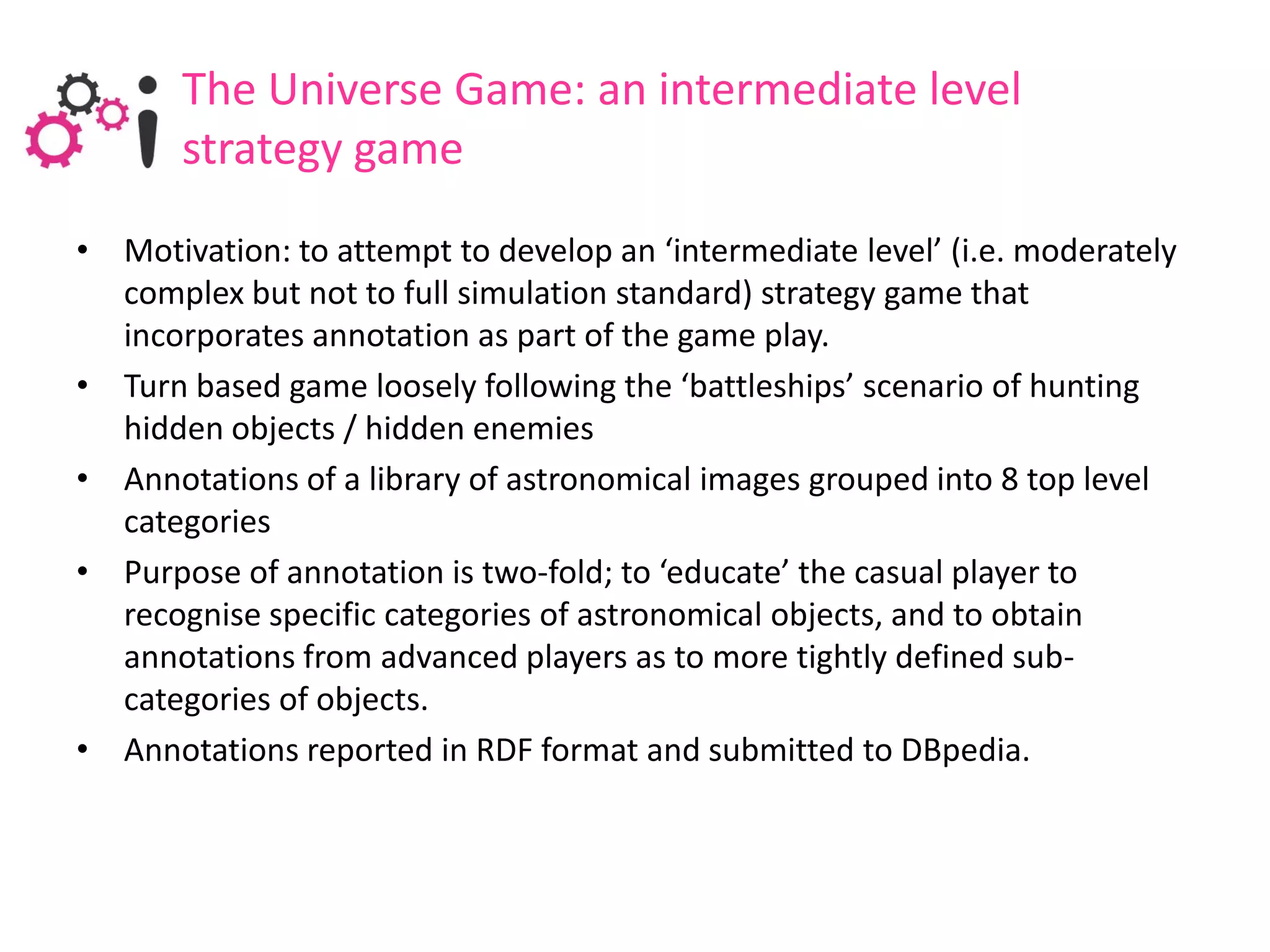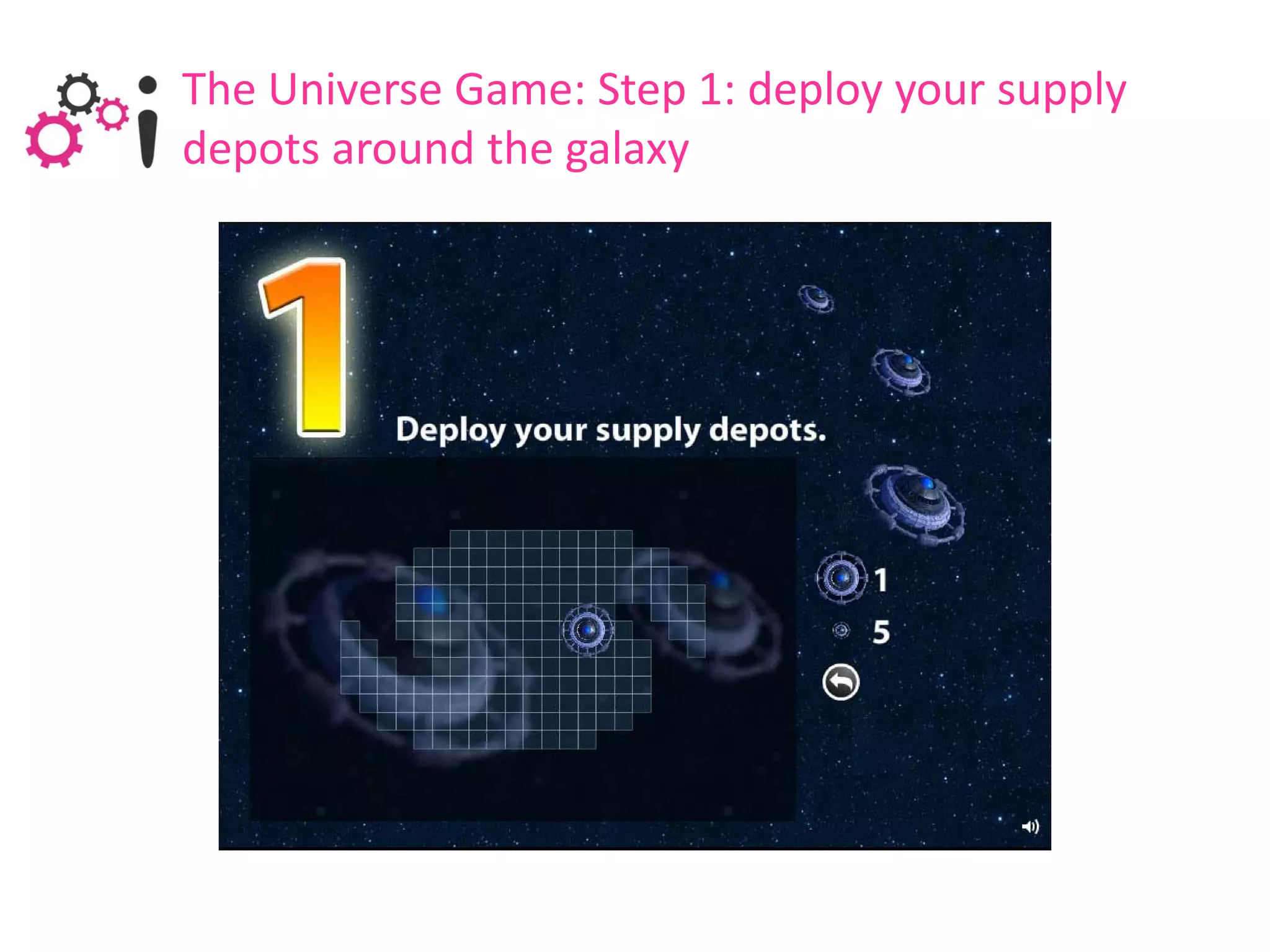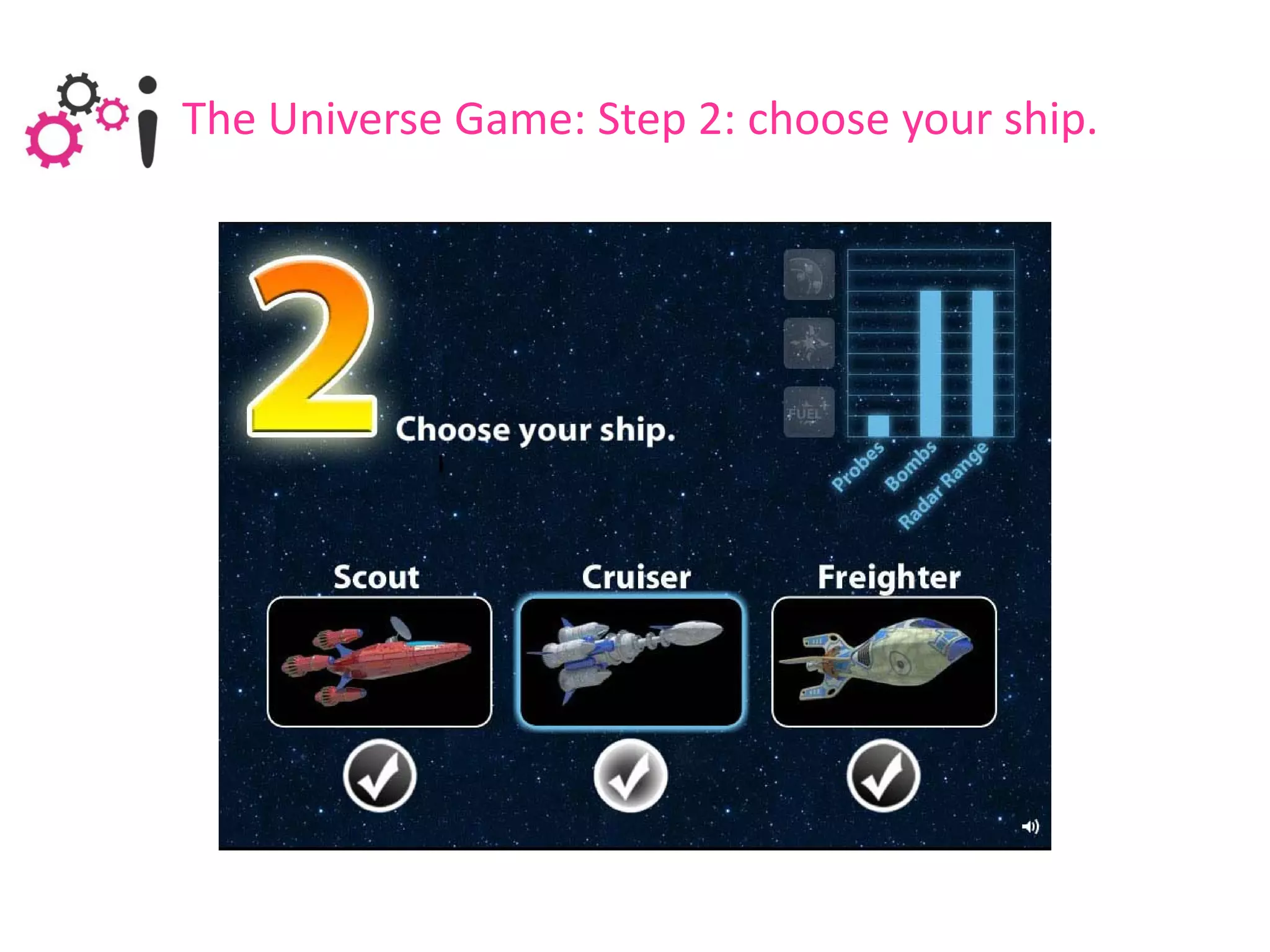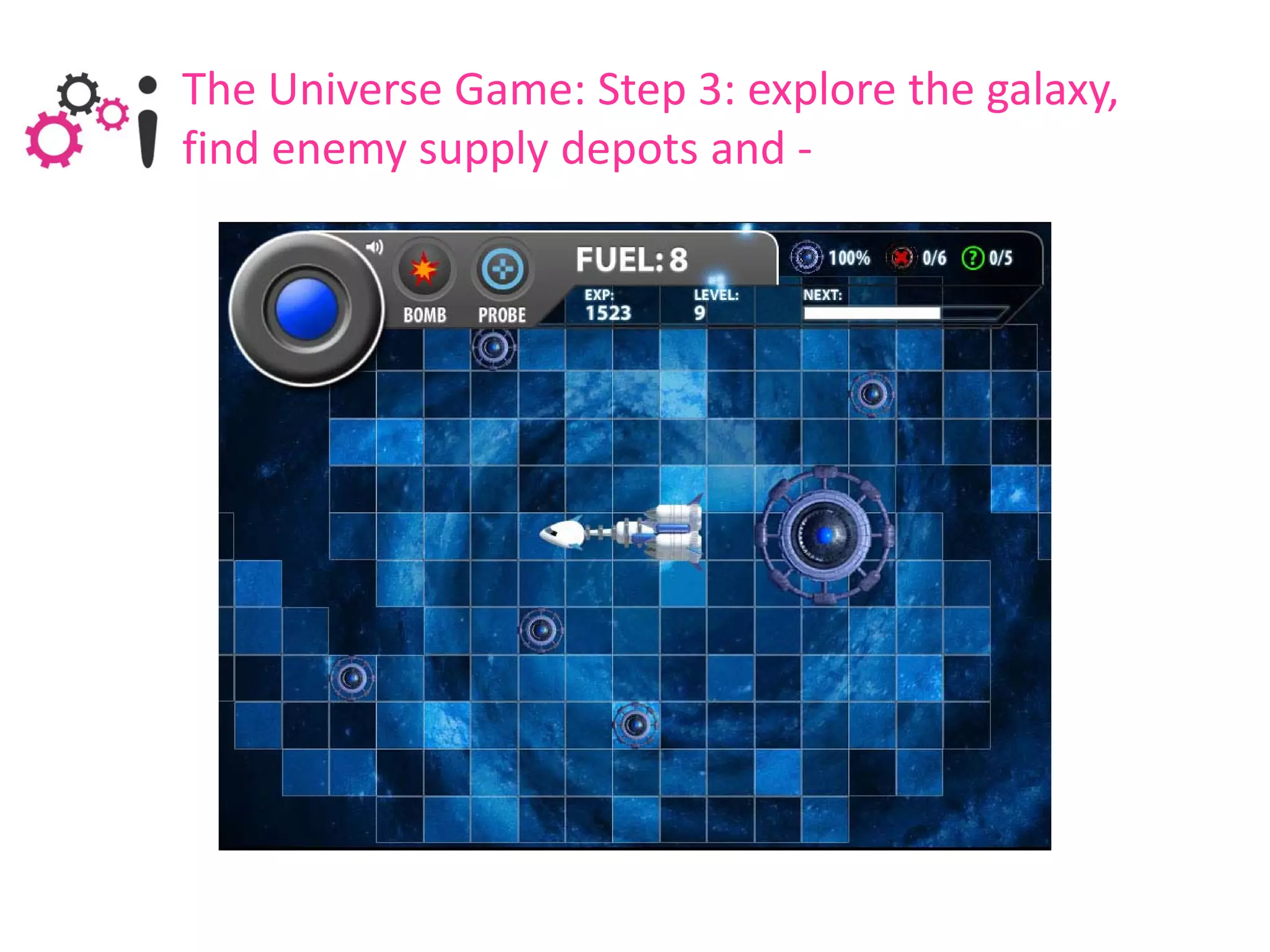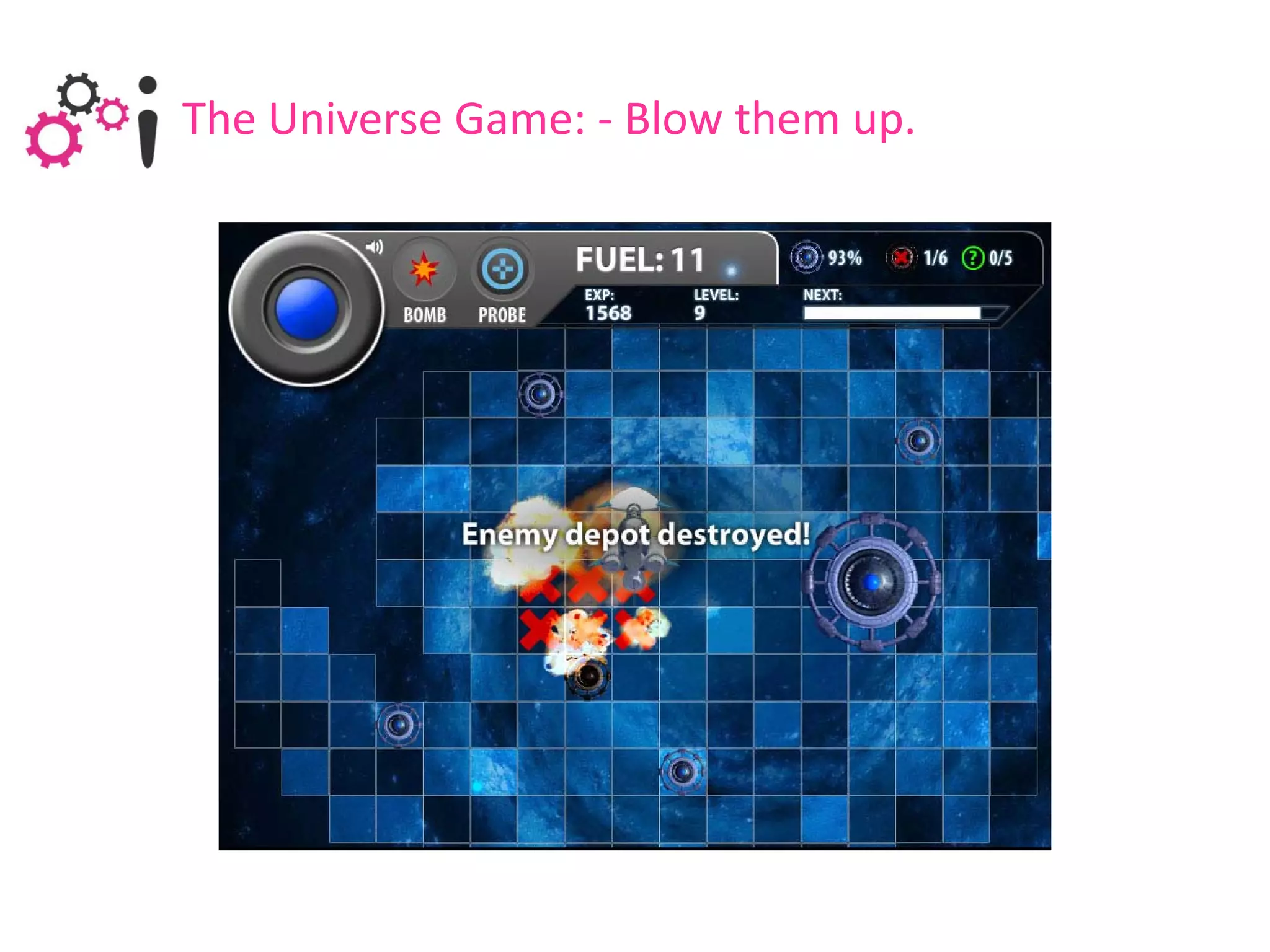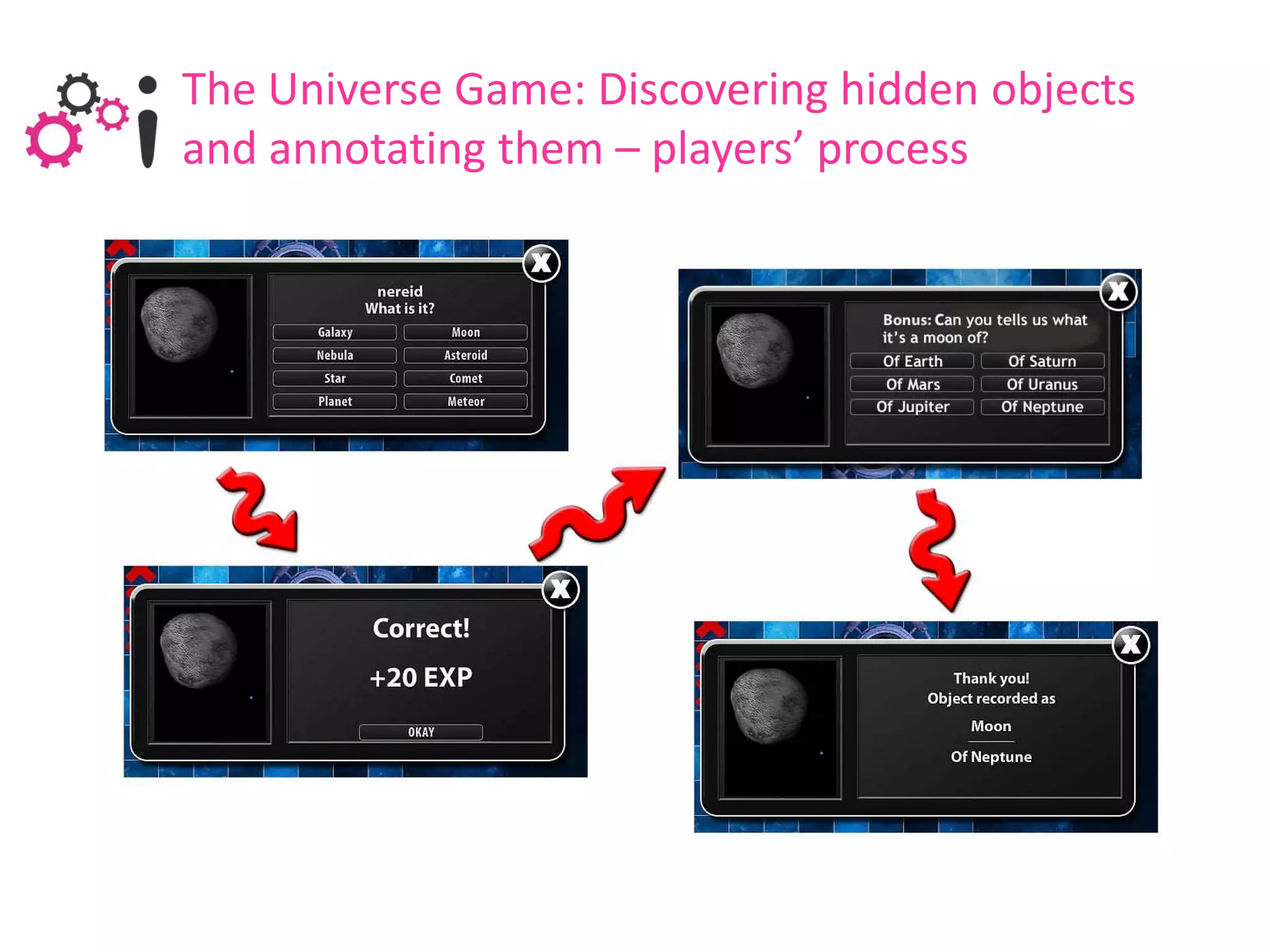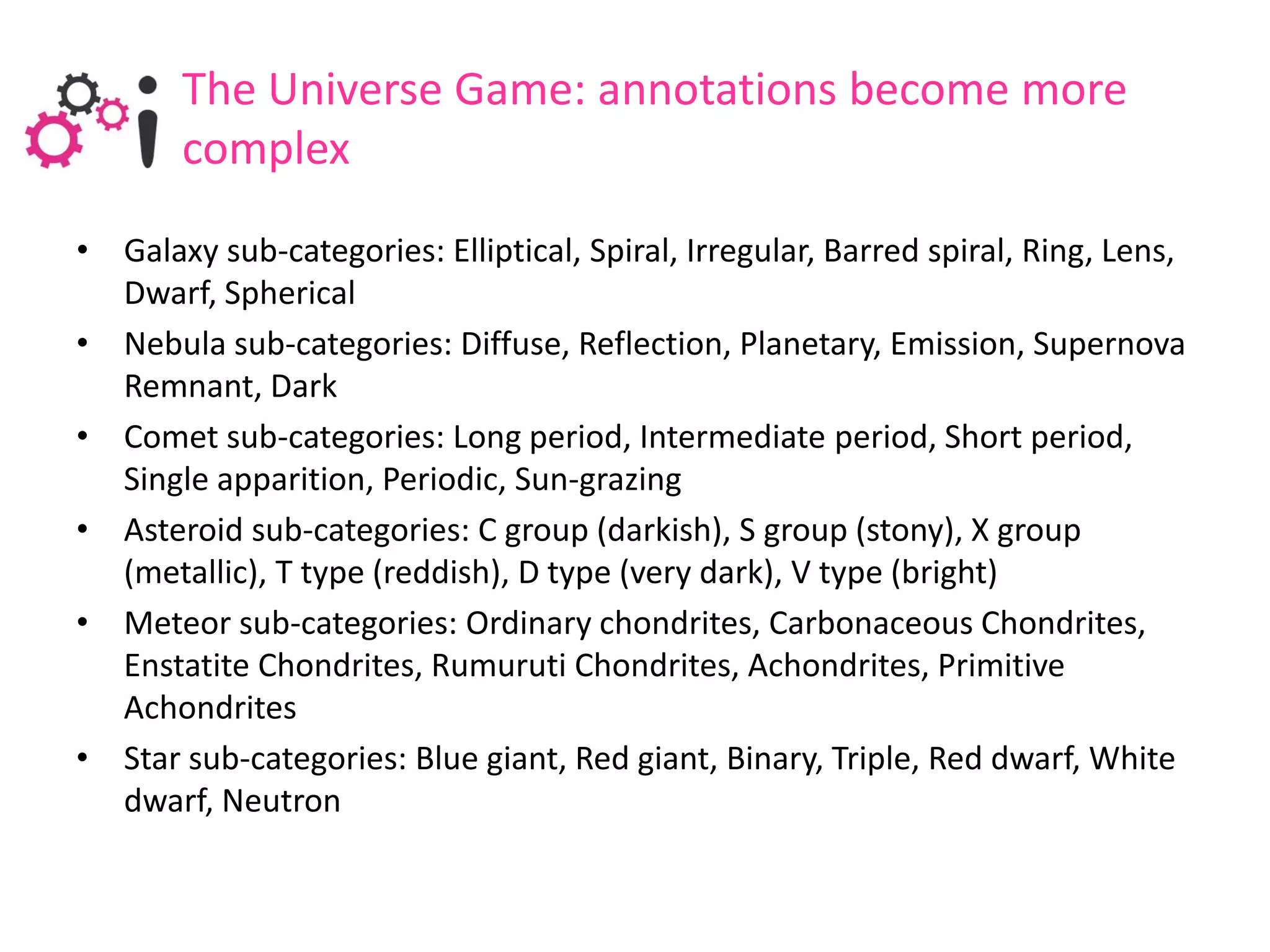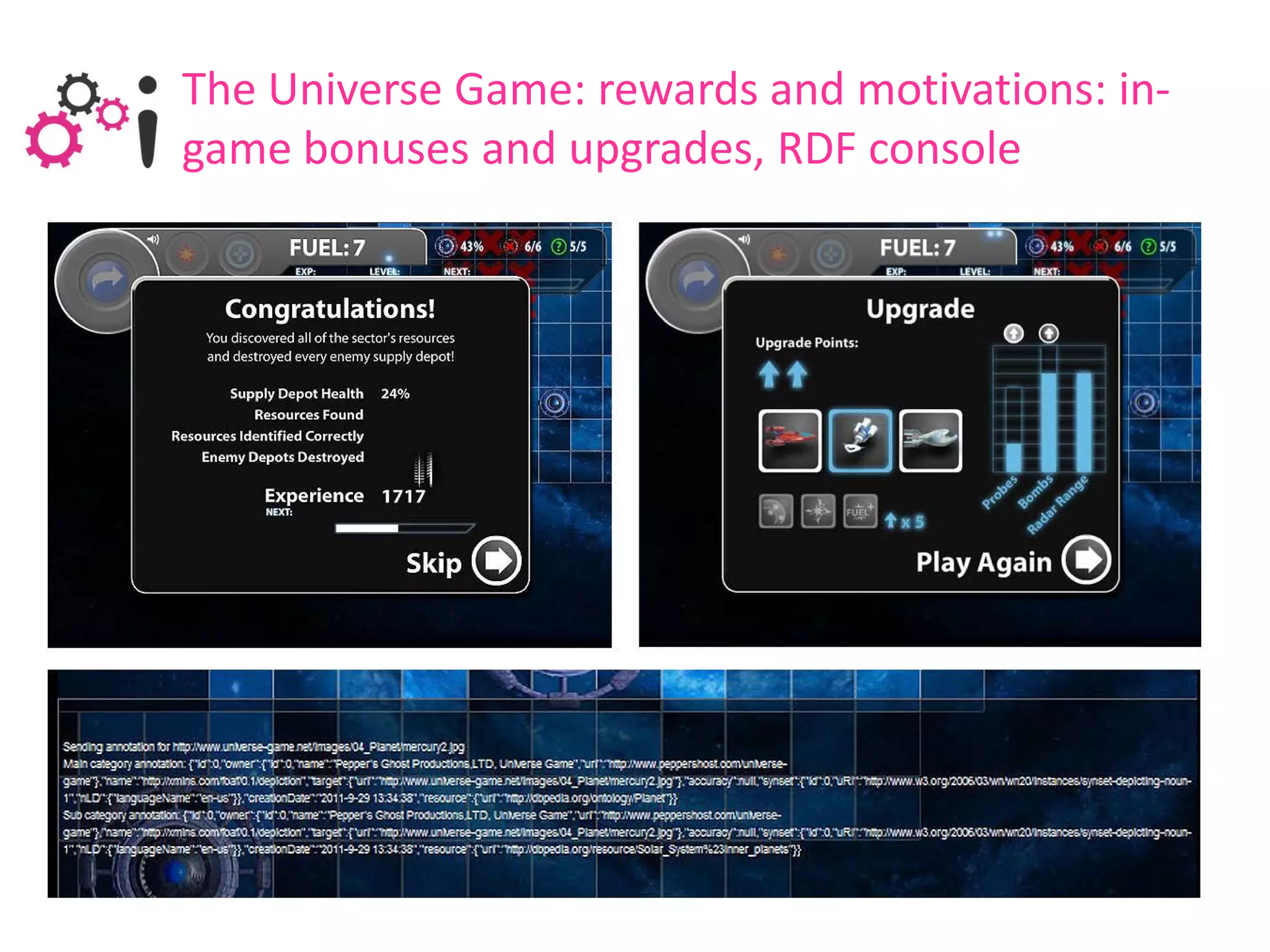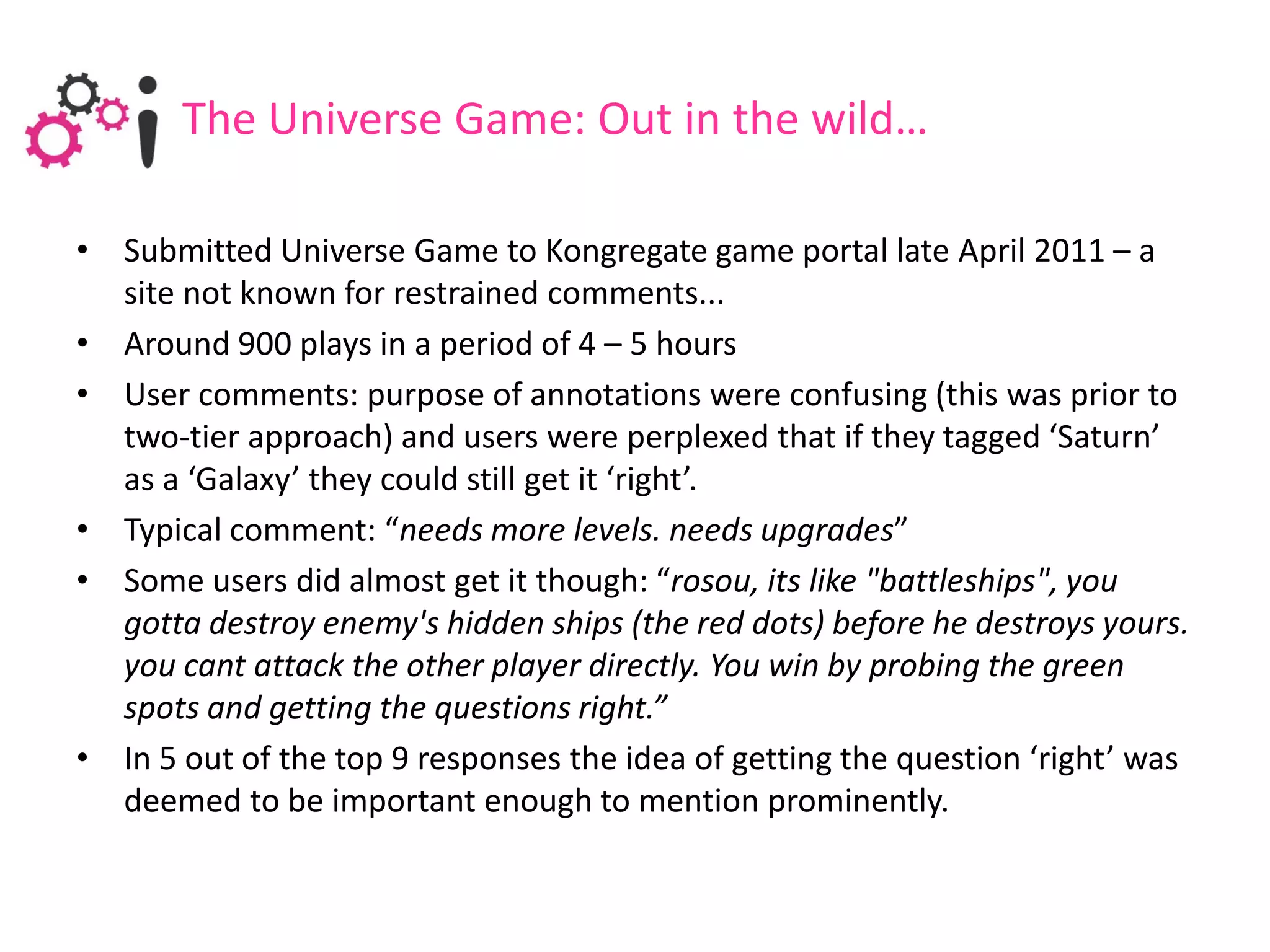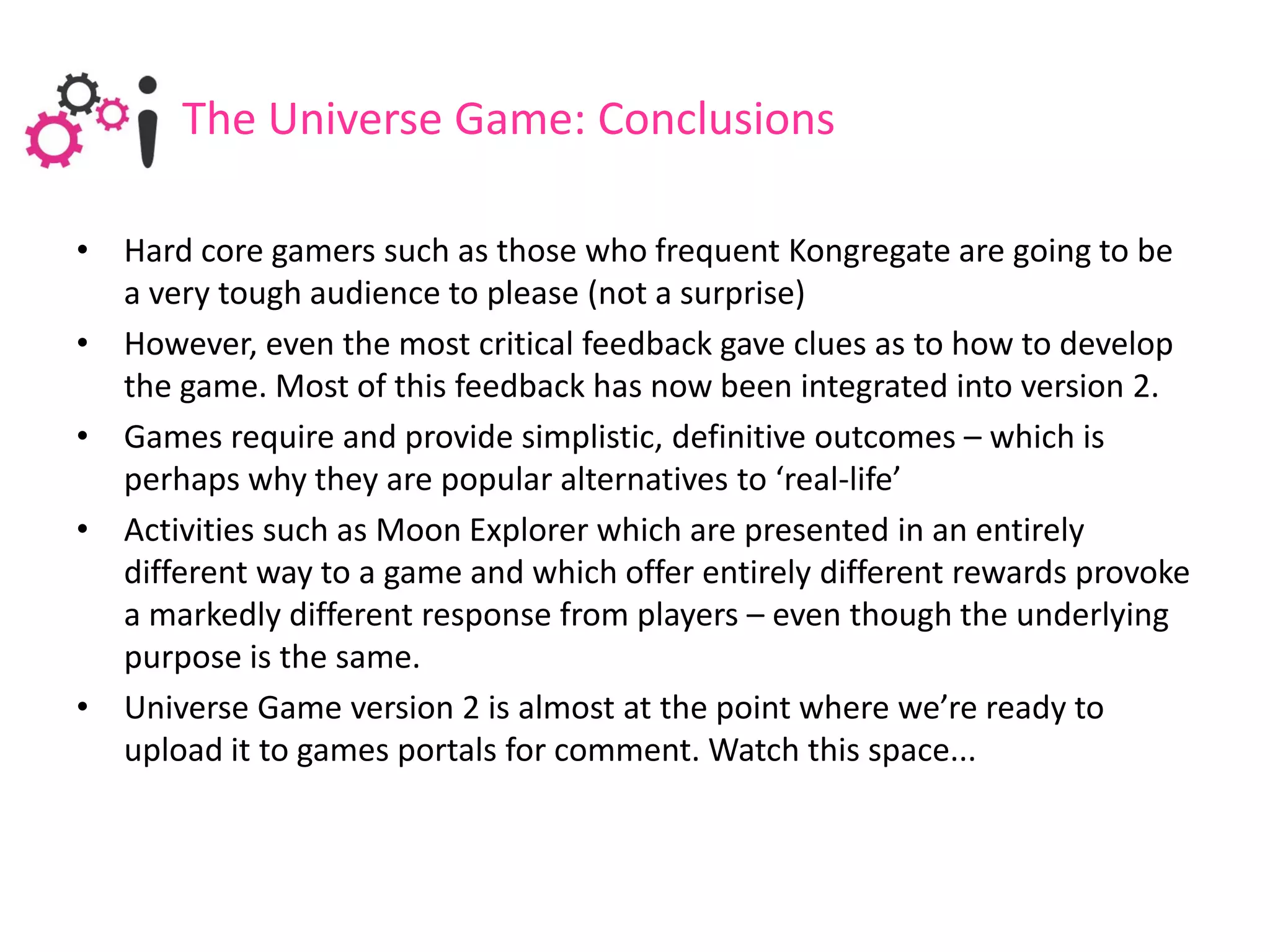The document discusses using citizen science projects like Galaxy Zoo and Moon Zoo to engage children in annotating and classifying astronomical images through games on the Tiny Planets educational website. It describes the Moon Explorer activity, which has children annotate images from the NASA Lunar Reconnaissance Orbiter to estimate crater sizes and compare "boulderiness". It also outlines the development of The Universe Game, an intermediate-level strategy game intended to incorporate annotation of astronomical images as part of gameplay.
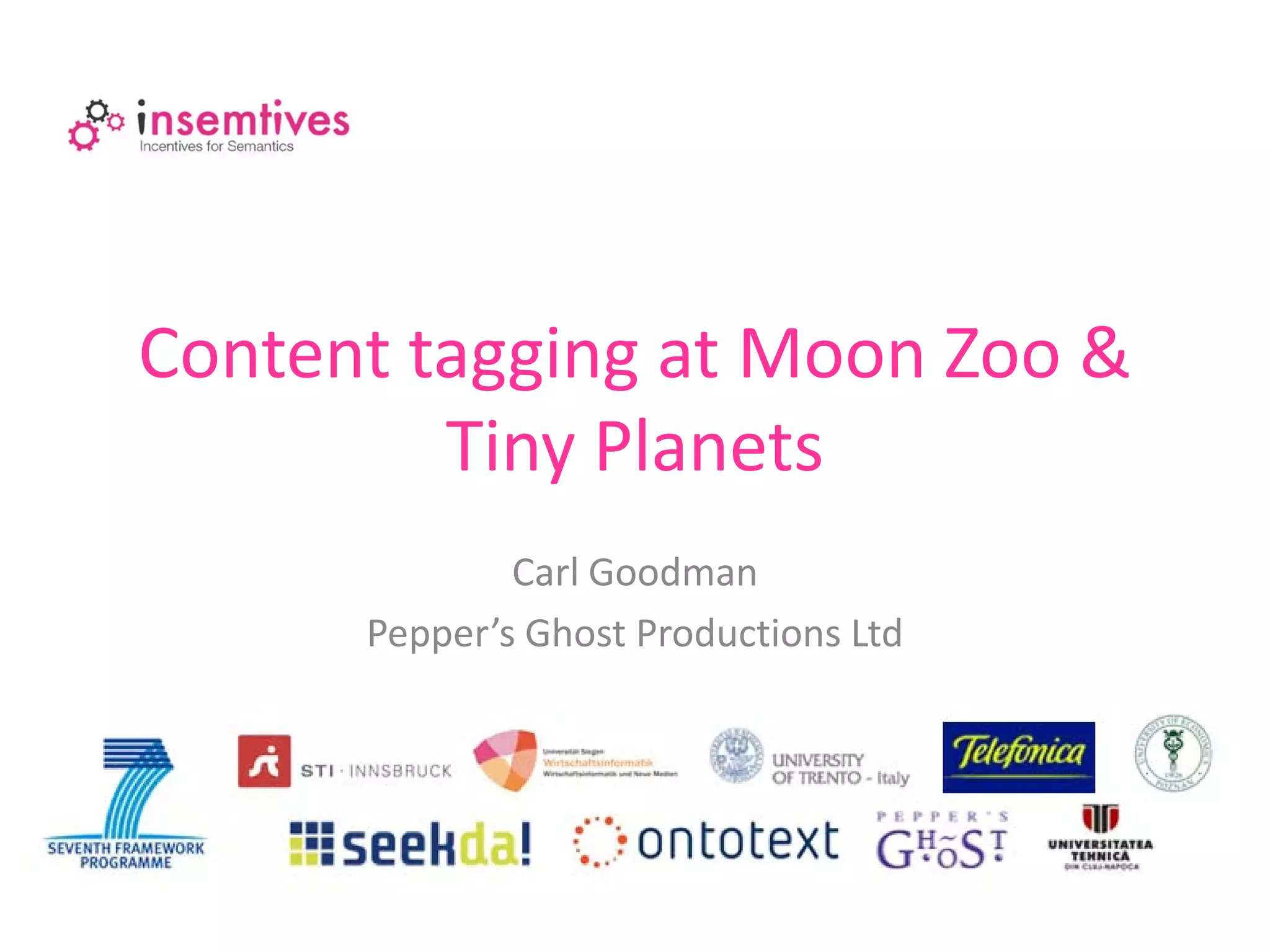
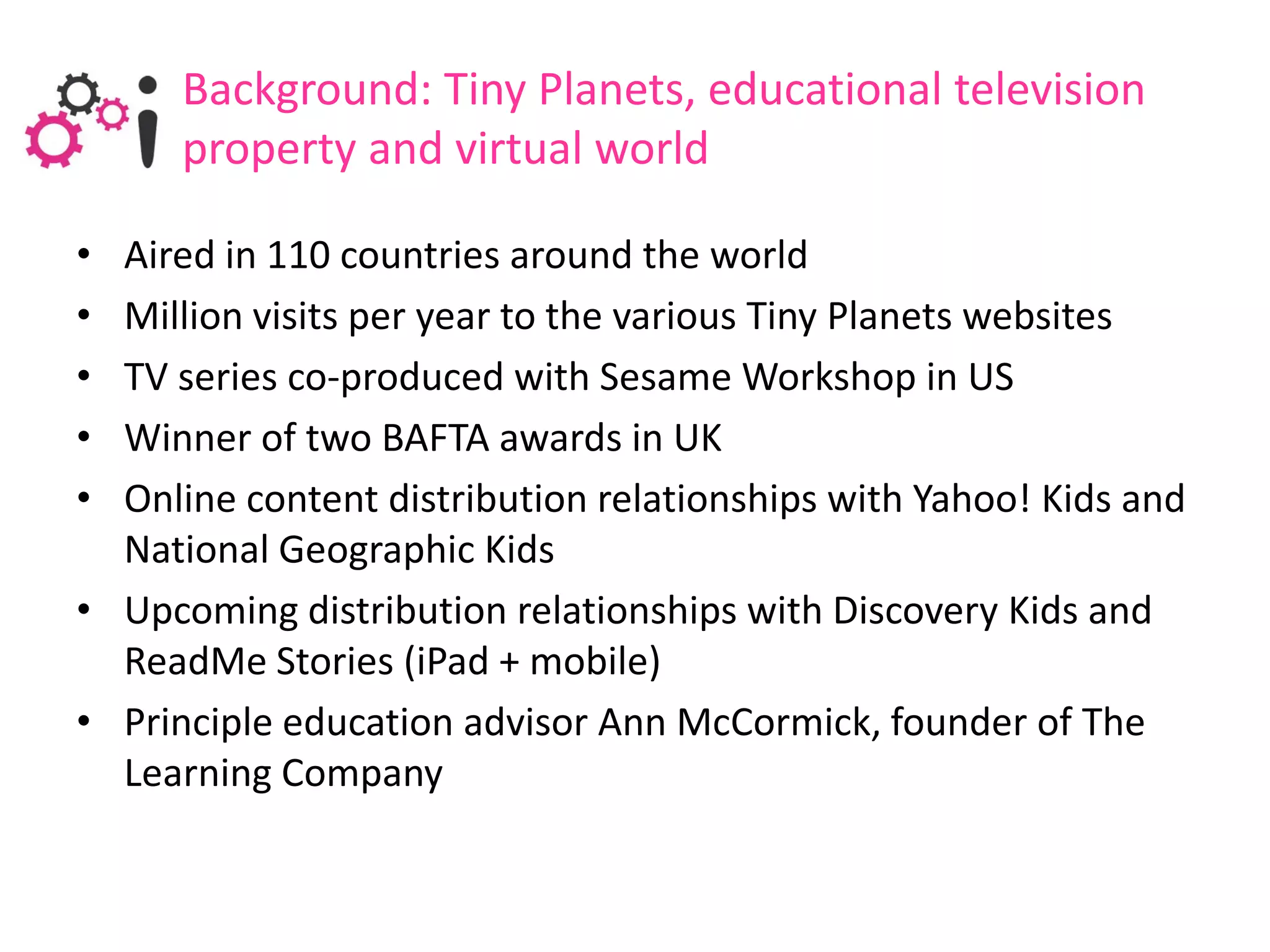
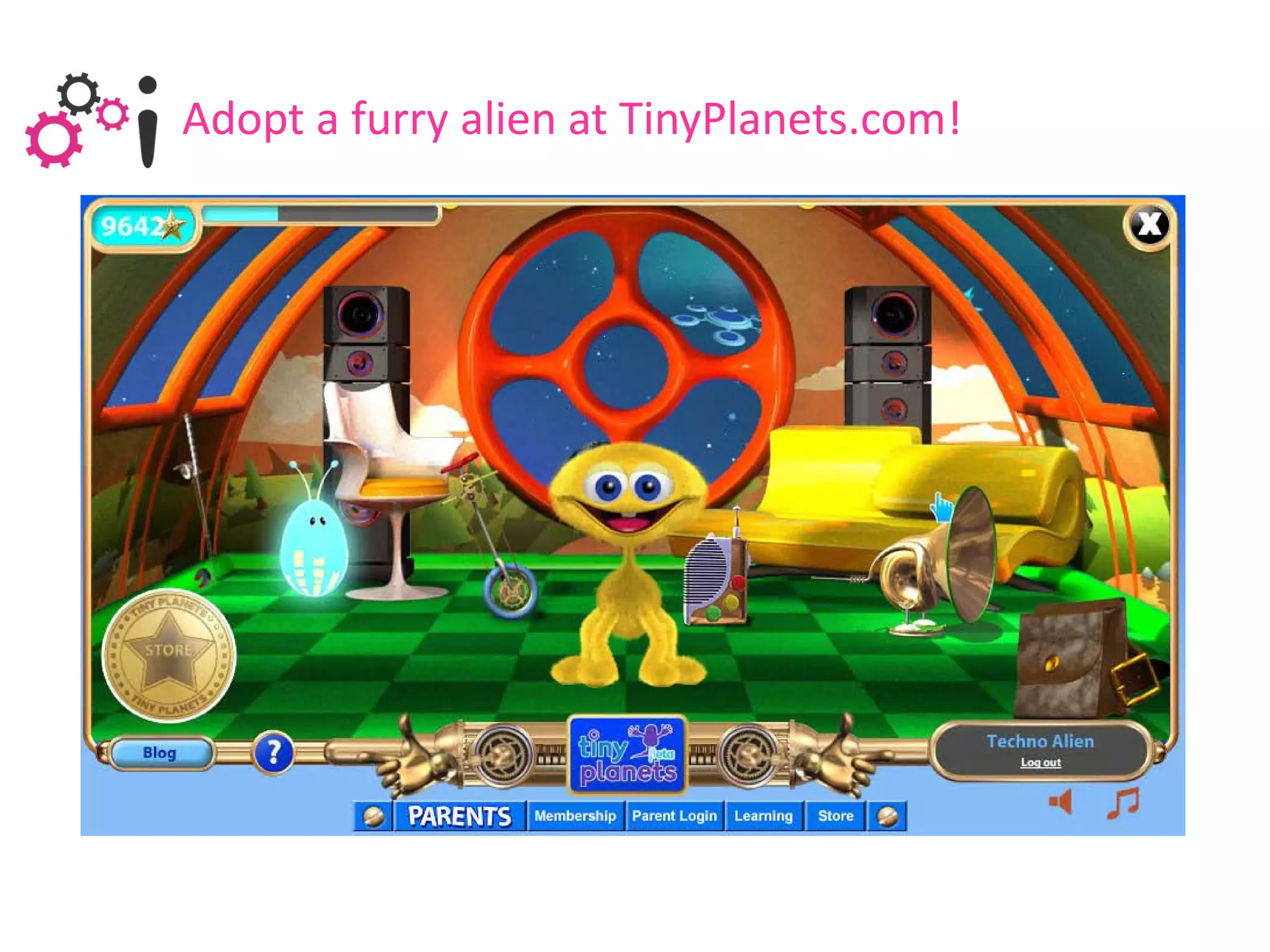
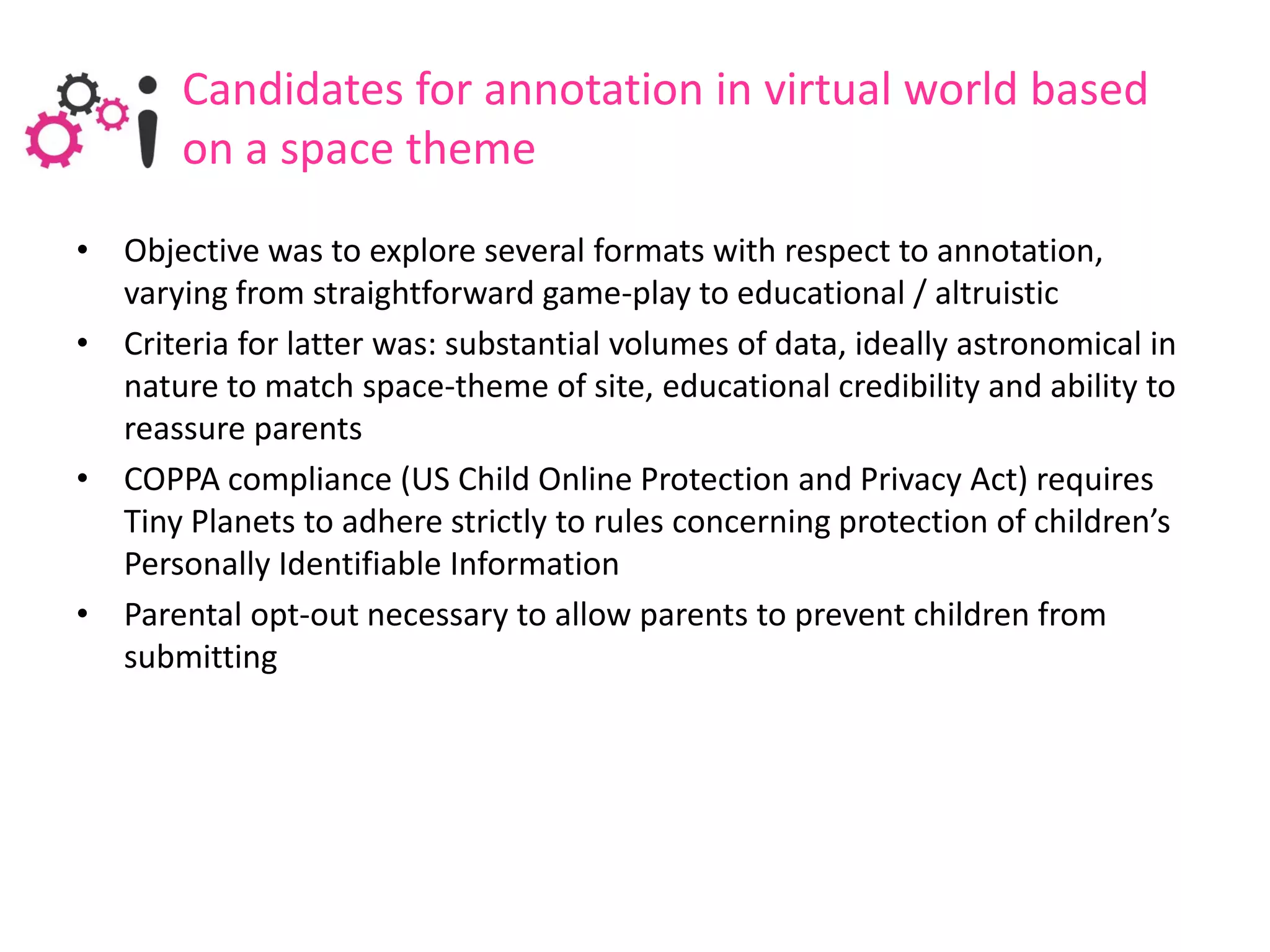
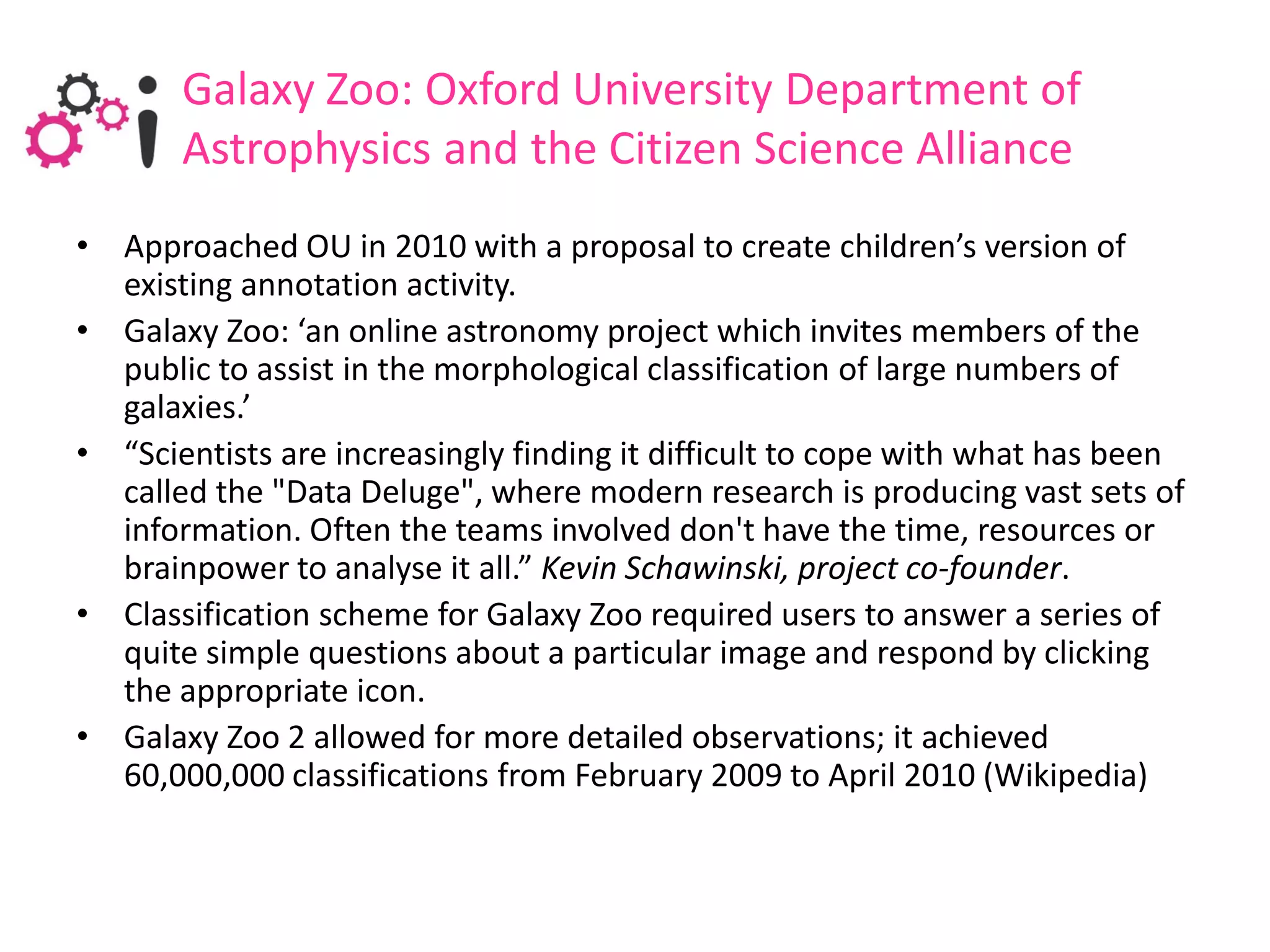
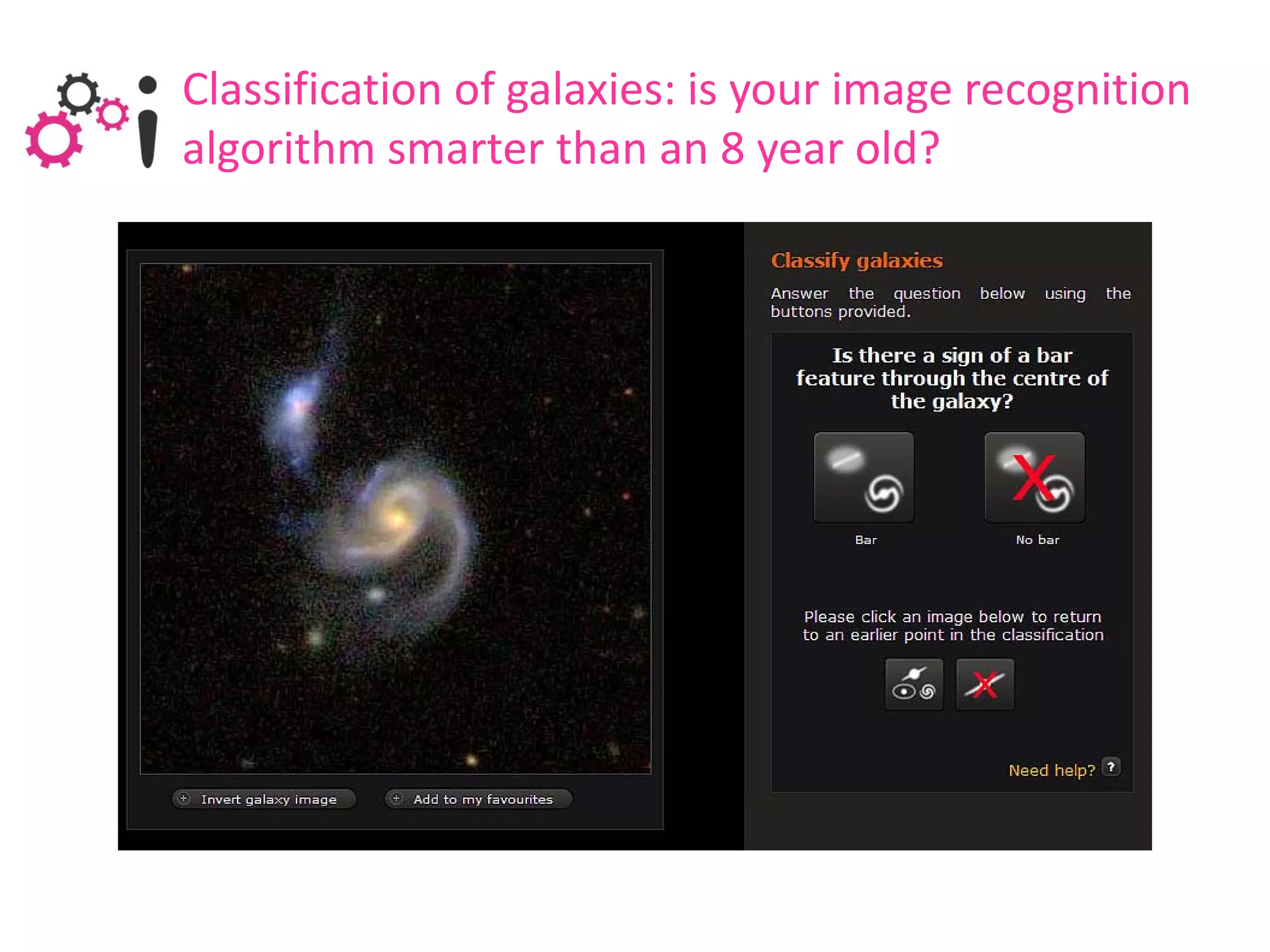
![Classification of galaxies: is your image recognition
algorithm smarter than an 8 year old?
• "Most of these galaxies have been photographed by a robotic telescope
[Sloan Digital Sky Survey] and then processed by computer. So this is the
first time they will have been seen by human eyes.“Schawinski
• From a human perspective the Galaxy Zoo images seemed comparatively
straightforward to classify – easy enough that a child in the Tiny Planets
target age-range really ought to be able to out-perform a computer.
• However, CSA was in the process of launching another project around the
same theme.
• Moon Zoo would take data from the NASA Lunar Reconnaissance Orbiter
(LRO) to examine crater sizes and boulder distribution. This would require
marking images in a slightly more complex fashion – a Flash interface
appeared most appropriate.
• Moon Explorer is Tiny Planets children's version of the activity](https://image.slidesharecdn.com/insemtivesiswc2011session4-120502164530-phpapp01/75/INSEMTIVES-Tutorial-ISWC2011-Session4-7-2048.jpg)
